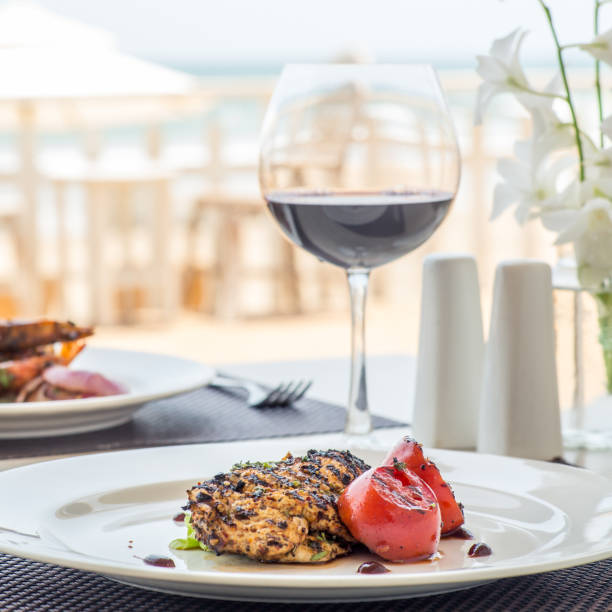In the ever-evolving world of wine, 2021 witnessed a fascinating shift towards new alternatives, challenging traditional norms and delighting the palates of enthusiasts. As consumers increasingly seek unique experiences, winemakers around the globe have responded with innovative approaches, introducing a diverse array of alternative wines that push boundaries and redefine the conventional wine landscape.
- Orange Wines: A Vibrant Revolution
One of the standout trends in 2021 was the surge in popularity of orange wines. Unlike their conventional counterparts, orange wines are white wines made by fermenting grape skins and seeds with the juice. This process imparts a rich amber hue, giving these wines their name. The result is a unique and complex flavor profile that combines the freshness of white wine with the structure and tannins typically associated with reds.
Winemakers from regions as diverse as Georgia, Italy, and California embraced the orange wine trend, experimenting with grape varieties like Pinot Grigio, Sauvignon Blanc, and Chardonnay. The resulting wines often exhibit notes of dried fruits, apricots, and a pleasant tannic grip, offering a sensory adventure for those seeking something out of the ordinary.
- Pet-Nats: The Effervescent Allure
Petillant Naturel, or Pet-Nat, wines continued to gain momentum in 2021. These naturally sparkling wines are crafted using the ancestral method, where fermentation completes in the bottle, capturing the enthusiasm created by the yeast and sugars. Pet-Nats are known for their lively bubbles, hazy appearance, and slightly funky, unfiltered character that adds a touch of unpredictability to the tasting experience.
Winemakers embraced a variety of grape types to produce Pet-Nats, from classic Champagne varieties like Chardonnay and Pinot Noir to more obscure indigenous grapes. The result is a spectrum of Pet-Nats, ranging from crisp and refreshing to complex and textured, offering a playful alternative to traditional sparkling wines.
- Low-Intervention Wines: Letting Nature Take the Lead
The rise of low-intervention winemaking in 2021 signaled a shift towards more natural and sustainable practices in the vineyard and cellar. Winemakers increasingly embraced organic and biodynamic farming methods, eschewing chemical pesticides and additives in favor of allowing the grapes to express their true terroir.
These wines, often labeled as “natural” or “raw,” reflect a commitment to minimal intervention during fermentation and aging. The result is a diverse array of wines that showcase the unique characteristics of the grapes and the specific vineyards where they were grown. Expect to find cloudy, unfiltered wines with vibrant acidity, showcasing the pure essence of the grape.
- Hybrid Varietals: Blurring the Lines
In 2021, winemakers experimented with hybrid grape varieties, crossing traditional grapes to create new and exciting blends. These mixed wines challenge the notion of what a classic wine should be, offering a fusion of flavors and characteristics that appeal to adventurous wine enthusiasts.
Blends like Marquette (a hybrid of Pinot Noir and Vitis riparia) and Chambourcin (a cross between American and European grape varieties) gained recognition for their ability to thrive in diverse climates while producing wines with unique profiles. As climate change continues to impact traditional grape-growing regions, hybrid varieties are becoming an essential tool for winemakers adapting to new environmental challenges.
- Alternative Aging: Beyond Oak Barrels
In 2021, winemakers explored alternative aging methods, moving beyond the conventional use of oak barrels. Amphorae, concrete tanks, and even clay vessels became popular choices for aging wine, imparting distinct textures and flavors to the final product.
Amphorae, inspired by ancient winemaking techniques, allow for the exchange of oxygen without the influence of wood, resulting in wines with a pure expression of fruit and terroir. Concrete tanks, known for their neutrality, preserve the freshness of the wine while adding a subtle mineral character. These alternative aging vessels offer winemakers a canvas to experiment with and create wines that defy the expectations associated with traditional oak aging.
The year 2021 marked a turning point in the world of wine, with a surge of interest and innovation in alternative styles. From orange wines and Pet-Nats to low-intervention practices, hybrid varietals, and alternative aging methods, winemakers around the globe embraced diversity and experimentation. As consumers continue to seek unique and authentic experiences, the world of alternative wines is poised to expand further, challenging conventions and reshaping the future of winemaking. Whether you’re a seasoned connoisseur or a curious newcomer, 2021’s alternative wines offer a compelling journey into uncharted territory, where every bottle tells a story of innovation, passion, and a commitment to pushing the boundaries of what wine can be.




